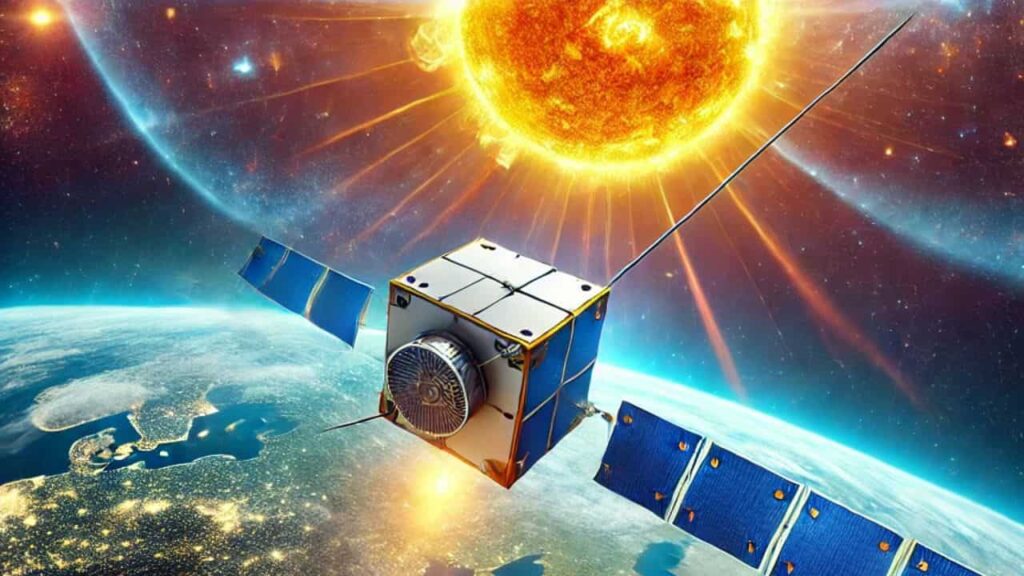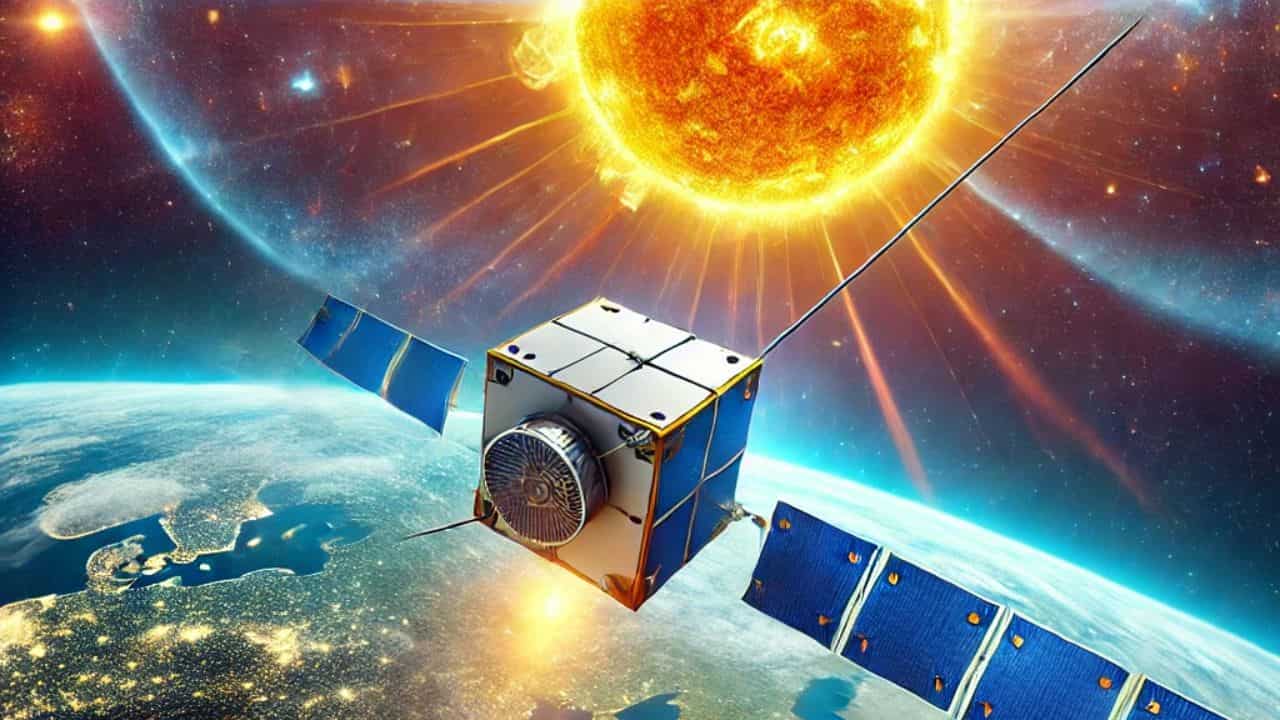NASA CURIE Mission, Solar Radio Waves, CubeSat, Space Weather, Solar Flares, Coronal Mass Ejections, Space Exploration, Radio Interferometry, SunRISE Mission
Discover NASA’s CURIE mission launching on July 9, 2024, to investigate the origins of solar radio waves. Learn how this groundbreaking mission using CubeSats will advance our understanding of space weather and solar phenomena.

NASA’s CURIE Mission: Unlocking the Mysteries of Solar Radio Waves
NASA’s CubeSat Radio Interferometry Experiment, or CURIE, is set to embark on a groundbreaking mission to explore the mysterious origins of radio waves emanating from the Sun. Scheduled for launch on July 9, 2024, CURIE aims to delve into the enigmatic sources of these radio emissions, which have puzzled scientists for decades. The mission is poised to enhance our understanding of solar phenomena and their impact on space weather, which can influence satellite communications and technology on Earth.
Unraveling Solar Radio Waves
Scientists have been aware of radio waves from the Sun for many years. These waves are known to be associated with solar flares and coronal mass ejections (CMEs), massive eruptions on the Sun that play a crucial role in space weather dynamics. Despite significant advancements in solar physics, the precise origin of radio waves within CMEs remains unknown. The CURIE mission seeks to address this knowledge gap using an innovative technique known as low-frequency radio interferometry.
The Innovation of Low-Frequency Radio Interferometry
Low-frequency radio interferometry, which has never been used in space before, will be the cornerstone of the CURIE mission. This technique involves using two independent spacecraft, each no larger than a shoebox, orbiting Earth approximately two miles apart. This separation allows CURIE’s instruments to measure minuscule differences in the arrival times of radio waves. By analyzing these differences, the spacecraft can accurately pinpoint the source of the radio waves.
CURIE’s Mission Design and Objectives
“This is a very ambitious and very exciting mission,” said Principal Investigator David Sundkvist, a researcher at the University of California, Berkeley. “This is the first time that someone is ever flying a radio interferometer in space in a controlled way, and so it’s a pathfinder for radio astronomy in general.”
The CURIE spacecraft, designed by a team from UC Berkeley, will measure radio waves in the range of 0.1 to 19 megahertz. These wavelengths are blocked by Earth’s upper atmosphere, necessitating space-based observations to conduct this research. CURIE will launch aboard an ESA (European Space Agency) Ariane 6 rocket from the Guiana Space Center in Kourou, French Guiana. The mission will carry CURIE to an altitude of 360 miles above Earth, providing an unobstructed view of the Sun’s radio waves.
Mission Execution and Data Collection
Upon reaching its designated orbit, the two adjoined CURIE spacecraft will establish communication with ground stations before separating. Once separated, they will deploy dual eight-foot antennas and begin collecting data. The mission’s unique approach will enable CURIE to pinpoint the origins of solar radio waves with unprecedented accuracy.
CURIE’s Broader Impact
CURIE is sponsored by NASA’s Heliophysics Flight Opportunities for Research and Technology (H-FORT) Program and is the sole mission on the NASA CubeSat Launch Initiative’s ELaNa (Educational Launch of Nanosatellites) 43 mission. As a pioneering endeavor, CURIE will serve as a proof-of-concept for space-based radio interferometry using CubeSats. This mission will also pave the way for the upcoming Sun Radio Interferometer Space Experiment (SunRISE) mission. SunRISE will utilize six CubeSats to create a two-dimensional map of the regions where solar radio waves originate, further advancing our understanding of solar dynamics.
Anticipated Discoveries and Contributions
The CURIE mission promises to deliver critical insights into the nature of solar radio waves and their sources. By identifying the exact locations within CMEs where these waves originate, scientists can improve their models of solar activity and space weather forecasting. This information is vital for safeguarding satellite communications, GPS systems, and other technologies that are vulnerable to solar disturbances.
Moreover, CURIE’s successful demonstration of low-frequency radio interferometry in space will open new avenues for radio astronomy. This technique could be applied to study various astronomical phenomena, potentially leading to groundbreaking discoveries beyond our solar system.
Future Prospects and Collaborations
The CURIE mission exemplifies the innovative spirit of modern space exploration, combining cutting-edge technology with collaborative efforts. The involvement of international partners, such as the European Space Agency, underscores the global significance of understanding space weather and its effects on Earth.
Looking ahead, the insights gained from CURIE will inform future missions and research initiatives. The upcoming SunRISE mission, building on CURIE’s findings, will employ a more extensive network of CubeSats to provide detailed maps of solar radio emissions. Such missions will enhance our ability to predict and mitigate the impacts of solar activity on Earth’s technological infrastructure.
Conclusion
NASA’s CURIE mission represents a significant leap forward in our quest to unravel the mysteries of solar radio waves. By leveraging innovative techniques and international collaboration, CURIE will provide valuable data that will enhance our understanding of the Sun and its influence on space weather. As we anticipate the launch on July 9, 2024, the scientific community and space enthusiasts alike eagerly await the discoveries that CURIE will bring, marking a new era in solar physics and radio astronomy.
Read More
- Eight CubeSats Launch on Firefly Aerospace Rocket for NASA CubeSat Initiative
- NASA GOLD Mission Discovers Surprising Alphabetical Shapes in EarthA Twitter user recently tricked ChatGPT, an AI language model, with some twisted questions
- NASA Prepares for Crucial Spacewalks to Repair and Upgrade International Space Station










